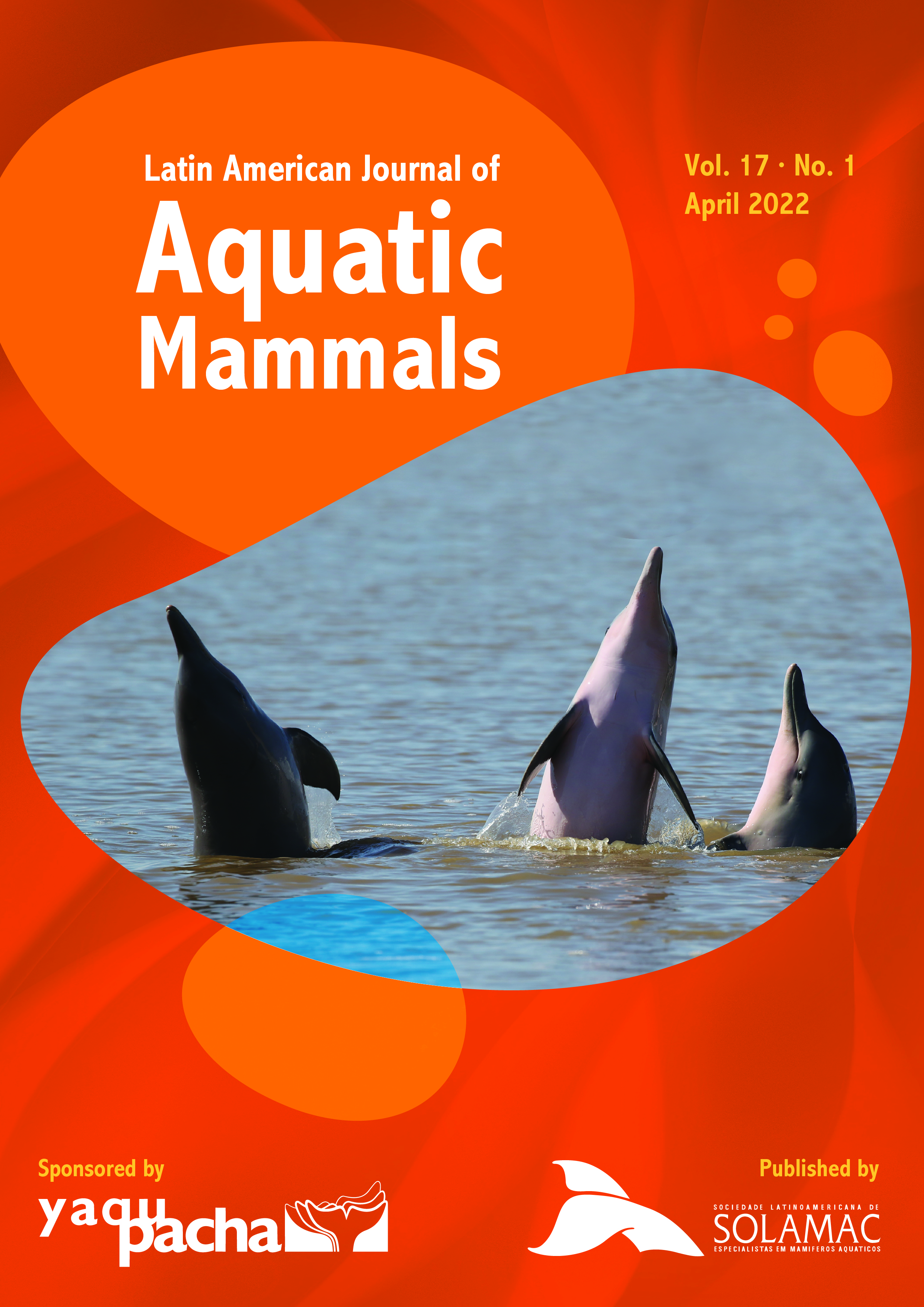River dolphins (Inia geoffrensis and Sotalia fluviatilis) in the Peruvian Amazon: habitat preferences and feeding behavior
DOI:
https://doi.org/10.5597/lajam00268Abstract
To estimate river dolphin habitat preference through density, as well as which habitats were preferred for feeding in the Pacaya- Samiria National Reserve, surveys were conducted during the high- to low-water season transition, from 2016 to 2018, in the channels, lakes, and confluences of the Samiria River. Both the Amazon river dolphin and tucuxi dolphin showed a preference for the confluences. The wide channel (Amazon: 24.8 dolphins/ km2, tucuxi: 7.6 dolphins/km2) and narrow channel (Amazon: 73.0 dolphins/km2; tucuxi: 6.0 dolphins/km2) also had high dolphin densities, especially for the Amazon river dolphins. In contrast with previous studies, the lakes had the lowest densities of dolphins for both species. High proportions of feeding behavior were observed in the confluence and wide channel habitats. The potentially larger presence of fish in these two habitats is likely the primary reason for the high dolphin densities. The high dolphin densities in the narrow channel, on the other hand, were associated with a low proportion of feeding behavior. Therefore, there are likely separate environmental factors attracting the dolphins, although additional data will be required to determine these factors. The results of this study will continue to help identify potential conservation and management actions by contributing to a better understanding of the ecology of river dolphins and their dependence on various habitats in one of the world’s largest protected flooded forests.
Downloads
Published
How to Cite
Issue
Section
License
Authors who publish with this journal agree to the following terms:- Authors retain copyright and grant the journal right of first publication with the work simultaneously licensed under a Creative Commons Attribution License that allows others to share the work with an acknowledgement of the work's authorship and initial publication in this journal.
- Authors are able to enter into separate, additional contractual arrangements for the non-exclusive distribution of the journal's published version of the work (e.g., post it to an institutional repository or publish it in a book), with an acknowledgement of its initial publication in this journal.
- Authors are permitted and encouraged to post their work online (e.g., in institutional repositories or on their website) prior to and during the submission process, as it can lead to productive exchanges, as well as earlier and greater citation of published work (See The Effect of Open Access).


